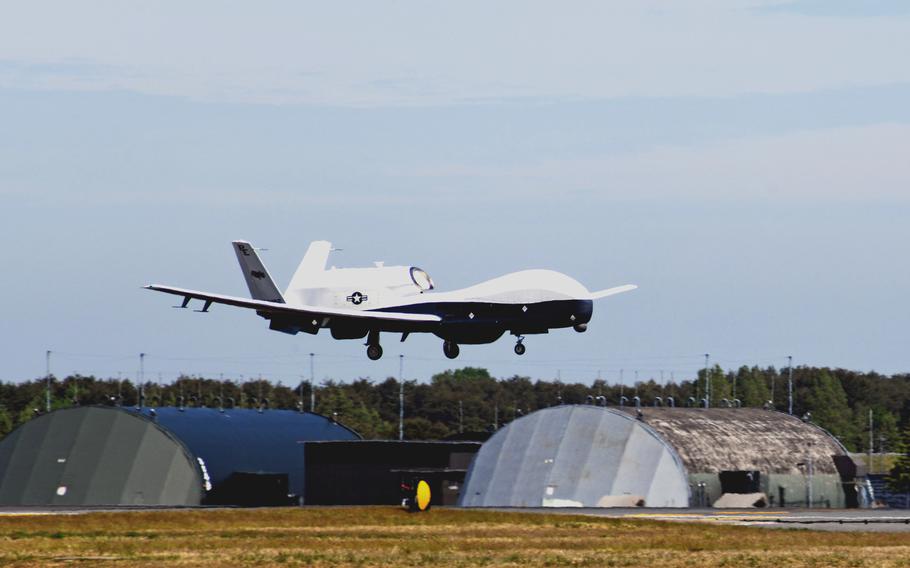
A Navy MQ-4C Triton drone lands at Misawa Air Base, Japan, on May 15, 2021. (Joseph M. Buliavac/U.S. Navy)
A Navy MQ-4C Triton unmanned surveillance plane has launched around 20 missions this summer from northeast Japan, where it shares airspace with U.S. and Japanese military and commercial aircraft, according to one of the drone pilots.
The Triton from Unmanned Patrol Squadron 19 at Naval Air Station Jacksonville, Fla., deployed from Guam to Misawa Air Base, Japan, in May. Another Triton, still on Guam, is also scheduled to deploy to Misawa, according to the Navy.
The aircraft, on their first mission in Japan, support the 7th Fleet at Yokosuka Naval Base throughout its area of operations, which covers the vast Indo-Pacific region.
A team of four drone pilots at Misawa works closely with the Japan Air Self-Defense Force and civilian air traffic controllers, according to one of them, Navy Lt. Fiona McCoy, of Aurora, Il.
Misawa is home to the U.S. Air Force’s 35th Fighter Wing with its “Wild Weasel” F-16 fighters as well as the Japan’s newest aircraft, the F-35A Lightning II stealth fighters. Navy P-8A Poseidon surveillance planes and EA-18G Growler electronic attack aircraft operate there, and commercial passenger planes also share Misawa’s runway.
“We coordinate every time we fly so everything is very structured,” McCoy said in a telephone interview Thursday.
After launch the pilots in Misawa hand off the drones to counterparts working in Jacksonville, who operate them during missions, she said.
The Tritons perform an intelligence, surveillance and reconnaissance mission over the sea, rather than land, said McCoy, who flew drones out of Guam last year.
“It’s cool to fly a high-tech platform,” said McCoy, a former Poseidon pilot.
About 80 maintainers are at Misawa supporting the mission, according to one of them, Petty Officer Jason Grob, of Springfield, Mo.
The mechanics do the same work at Misawa that they perform on Guam, he said in the same telephone interview as McCoy.
“Misawa is a great location, but an airfield is an airfield,” he said.
The Tritons’ mission coincides with the deployment of RQ-4 Global Hawk drones to Yokota Air Base, home of U.S. Forces Japan in western Tokyo. U.S. forces have temporarily deployed the Guam-based Global Hawks to Japan each summer since 2014 to avoid typhoons.
Tritons, which the Navy has flown out of Guam since January 2020, are akin to Global Hawks but specialized for maritime, rather than land, surveillance.
“We can stay airborne for up to 24 hours,” McCoy said of the Tritons. “Our camera can provide full motion video so we can provide information in real time.”